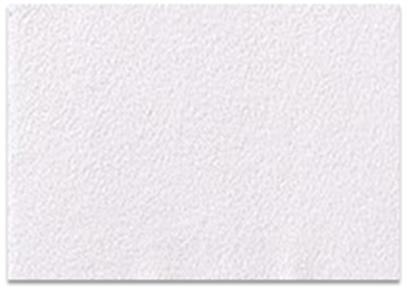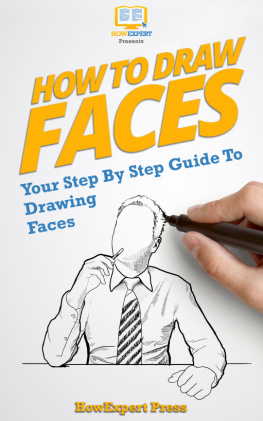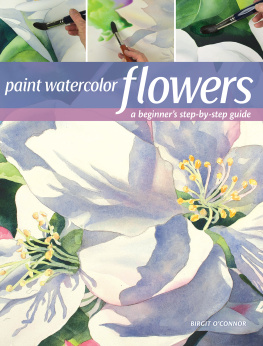How To Watercolor
Your Step-by-Step Guide To Painting WithWatercolors
HowExpert
Copyright HowExpert
http://www.HowExpert.com
For more tips related to this topic, visit www.HowExpert.com/watercolor .
Recommended Resources
www.HowExpert.com QuickHow To Guides on Unique Topics by Everyday Experts.
www.HowExpert.com/writers Write About Your #1 Passion/Knowledge/Experience.
www.HowExpert.com/membership Learn a New How To Topic About Practically Everything EveryWeek.
www.HowExpert.com/jobs Check Out HowExpert Jobs.
COPYRIGHT, LEGAL NOTICE AND DISCLAIMER:
COPYRIGHT BY HOWEXPERT. ALL RIGHTS RESERVEDWORLDWIDE. NO PART OF THIS PUBLICATION MAY BE REPRODUCED IN ANYFORM OR BY ANY MEANS, INCLUDING SCANNING, PHOTOCOPYING, OROTHERWISE WITHOUT PRIOR WRITTEN PERMISSION OF THE COPYRIGHTHOLDER.
DISCLAIMER AND TERMS OF USE: PLEASE NOTE THAT MUCH OFTHIS PUBLICATION IS BASED ON PERSONAL EXPERIENCE AND ANECDOTALEVIDENCE. ALTHOUGH THE AUTHOR AND PUBLISHER HAVE MADE EVERYREASONABLE ATTEMPT TO ACHIEVE COMPLETE ACCURACY OF THE CONTENT INTHIS GUIDE, THEY ASSUME NO RESPONSIBILITY FOR ERRORS OR OMISSIONS.ALSO, YOU SHOULD USE THIS INFORMATION AS YOU SEE FIT, AND AT YOUROWN RISK. YOUR PARTICULAR SITUATION MAY NOT BE EXACTLY SUITED TOTHE EXAMPLES ILLUSTRATED HERE; IN FACT, IT'S LIKELY THAT THEY WON'TBE THE SAME, AND YOU SHOULD ADJUST YOUR USE OF THE INFORMATION ANDRECOMMENDATIONS ACCORDINGLY.
THE AUTHOR AND PUBLISHER DO NOT WARRANT THEPERFORMANCE, EFFECTIVENESS OR APPLICABILITY OF ANY SITES LISTED ORLINKED TO IN THIS BOOK. ALL LINKS ARE FOR INFORMATION PURPOSES ONLYAND ARE NOT WARRANTED FOR CONTENT, ACCURACY OR ANY OTHER IMPLIED OREXPLICIT PURPOSE.
ANY TRADEMARKS, SERVICE MARKS, PRODUCT NAMES OR NAMEDFEATURES ARE ASSUMED TO BE THE PROPERTY OF THEIR RESPECTIVE OWNERS,AND ARE USED ONLY FOR REFERENCE. THERE IS NO IMPLIED ENDORSEMENT IFWE USE ONE OF THESE TERMS.
NO PART OF THIS BOOK MAY BE REPRODUCED, STORED IN ARETRIEVAL SYSTEM, OR TRANSMITTED BY ANY OTHER MEANS: ELECTRONIC,MECHANICAL, PHOTOCOPYING, RECORDING, OR OTHERWISE, WITHOUT THEPRIOR WRITTEN PERMISSION OF THE AUTHOR.
ANY VIOLATION BY STEALING THIS BOOK OR DOWNLOADING ORSHARING IT ILLEGALLY WILL BE PROSECUTED BY LAWYERS TO THE FULLESTEXTENT. THIS PUBLICATION IS PROTECTED UNDER THE US COPYRIGHT ACT OF1976 AND ALL OTHER APPLICABLE INTERNATIONAL, FEDERAL, STATE ANDLOCAL LAWS AND ALL RIGHTS ARE RESERVED, INCLUDING RESALE RIGHTS:YOU ARE NOT ALLOWED TO GIVE OR SELL THIS GUIDE TO ANYONE ELSE.
THIS PUBLICATION IS DESIGNED TO PROVIDE ACCURATE ANDAUTHORITATIVE INFORMATION WITH REGARD TO THE SUBJECT MATTERCOVERED. IT IS SOLD WITH THE UNDERSTANDING THAT THE AUTHORS ANDPUBLISHERS ARE NOT ENGAGED IN RENDERING LEGAL, FINANCIAL, OR OTHERPROFESSIONAL ADVICE. LAWS AND PRACTICES OFTEN VARY FROM STATE TOSTATE AND IF LEGAL OR OTHER EXPERT ASSISTANCE IS REQUIRED, THESERVICES OF A PROFESSIONAL SHOULD BE SOUGHT. THE AUTHORS ANDPUBLISHER SPECIFICALLY DISCLAIM ANY LIABILITY THAT IS INCURRED FROMTHE USE OR APPLICATION OF THE CONTENTS OF THIS BOOK.
COPYRIGHT BY HOWEXPERT ALL RIGHTS RESERVEDWORLDWIDE.
Table of Contents
Introduction
Painting with the watercolor medium is animmemorial art, followed by the Chinese, Egyptians, Europeans, etc.We have seen the perfectly preserved art of cave men depictingsimple scenes using twigs or bones as brushes and dried vegetablepowders mixed in water as colors.
Watercolor painting offers an adventurouschallenge even to experts. The unpredictability of the medium ofthe resulting painting often surprises the artist. The artist mustlearn to harness the unpredictable nature of the painting to hisadvantage. This skill can be developed only through experience.
The objective of this guide is to teach youthe different aspects of watercolors. We will cover the properselection of paraphernalia. Starting with an introduction to thevarious washes, brush strokes, and techniques used to create imagesof landscapes, still life, people, and anything else you canimagine.

The Artists Desk

A Sunny Day
Chapter 1: TheWatercolor Painting Essentials
The choices available can often confuse thenovice, who first sets foot in the world of watercolors. Buy thebest tools that money can buy, as quality matters when it comes topainting. There are hundreds of types and brands of paints, paperand brushes to choose from.
The Tools Of The Craft
1.Paints: Colors fall into twobasic categories: cool colors and warm colors. Having the basiccolors or primary colors: blue, red, yellow in both the types isenough to have access to the complete color palette. Artists'colors have a lot more transparency of pigments and visualbrilliance. For this reason, consider purchasing artists' colorsover the student colors.
If you can afford it, then considerpurchasing the following colors: alizarin crimson, lemon yellow,ultramarine blue and ivory black. Watercolor artists never usewhite; the white of the paper is used in the place of whitepigment.

Artists Colors
2.Paper: The papers used forwatercolors typically fall into one of two categories: hand madeand machine made.
Three surface types comprise machine madepaper hot pressed, rough, cold pressed. Rough paper differs frompressed paper in that rough paper is textured and has a grainyeffect, while the hot pressed paper has a smooth surface. Thetexture of cold pressed paper is not as rough as rough pressedpaper, but is more textured that hot press paper.
Handmade paper is a great medium because ofits durability and texture. Make sure to inspect the thickness ofthe paper. You do not need to stretch thicker paper before usingit. When purchasing paper, be sure to note whether or not it isacid free. Acid damages paper over time.
Thin paper should be stretched before youstart painting on it. Stretching involves putting the paper underrunning water or in a clean bath tub for about 5 minutes, so thatthe paper is wet evenly. Next, dry the paper on a flat board andstaple it around the edges.
The resulting painting surface is a moretaut, flat surface. This creates a stable surface on which topaint.

Handmade Paper
3.Brushes: Choose brushes based ontheir type and shape. The best quality watercolor brushesand alsothe most expensiveare the ones made from the Kolinsky sable fromRussia. Sable, squirrel, or synthetic sable materials comprise themore common brush materials.
Natural, hair made brushes are more effectiveat absorbing water and holding paint, making them superior to otherbrushes. The different shapes include round, pointed, flat,brights, stipplers, egberts, daggers and fans.

Watercolor brushes
You can determine the quality of a brush byhow effectively he brush recovers its original shape afterstroking. Find a brush with a sharp point, which allows you to bemore surgical in your painting. It should be able to hold color,resulting in a more even flow of colors as you paint.





















